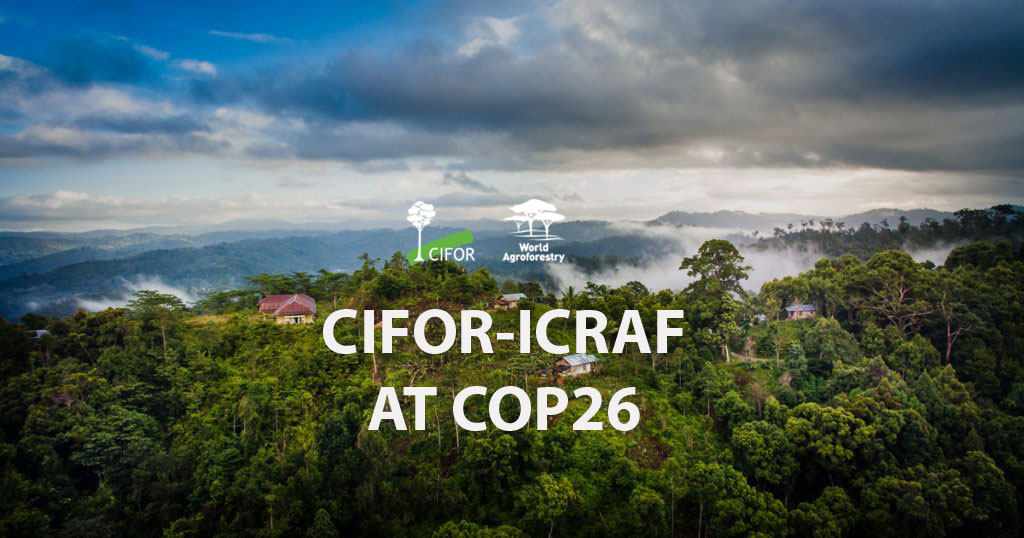
Forests are under massive threat worldwide, planet warming emissions are trending upward and, despite their essential role and potential, governments have yet to deliver on international climate change and financing targets, according to a new report.
Although Goal 7 under the voluntary, non-binding New York Declaration on Forests (NYDF) agreed by U.N. member countries in 2014 has been achieved through the recognition of the vital role forests play in the international climate agenda for their carbon storage capacity, efforts have been insufficient to address deforestation and unsustainable land use.
The latest NYDF annual progress assessment authored by NYDF partners and coordinated by Climate Focus, states that although some deforestation rates have dropped in 32 key nations, and policies and institutions implemented, governments have failed to adequately address deforestation and unsustainable land use.
The intended goal to end deforestation will not be met by the time it expires in 2030, the report states. Currently, the global deforestation rate is around 10 million hectares a year and, deforestation would need to decrease by nearly a million hectares a year to achieve the target.
The overall impact of Nationally Determined Contributions (NDCs), which are a component of the U.N. Paris Agreement strategy to prevent post-industrial average temperatures from rising to 1.5 degrees Celsius or higher, is as yet unclear. Under the agreement, through NDCs, each signatory country is required to provide data on greenhouse gas emissions and reductions targets it aims to meet post-2020.
The 32 countries assessed in the report represent 82 percent of total mitigation potential from reducing deforestation, 68 percent for improved forest management and 66 percent for restoring forests. The 10 countries that quantify their forest targets would achieve only 50 percent of the overall combined mitigation potential of their forests, the report says. If India’s tree-planting target is excluded, the collective target would achieve just 16 percent of the combined mitigation potential of their forests.
“Unfortunately, this report shows that we are a long way from achieving Goal 7,” said Robert Nasi, managing director general of the Center for International Forestry Research and World Agroforestry (CIFOR-ICRAF). “The world is on a 2.7 degree C trajectory and we will need many more real actions beyond long term pledges, if we want to remain within a ‘safe’ range of temperature increase by 2030.”
Forest mitigation goals are fundamentally at odds with an economic system that assumes infinite production, consumption and supports unsustainable encroachment for agriculture, mining and natural resource extraction, the report says.
To fully realize the mitigation potential of forests, governments must “green” economies by doing away with subsidies that support unsustainable production, establishing and requiring forest certification standards and support for climate smart and regenerative agriculture.
Since 2010, countries have spent an average of $2.4 billion a year for forest and climate goals at the national and international levels, between 0.5 to 5 percent of what is needed to protect and restore forests, an amount estimated at $460 billion a year.
“Right now, available funding is minuscule compared to what is needed,” said Michael Brady, a principal scientist at CIFOR-ICRAF who leads the Value Chains, Finance and Investment team. “If we increase investments in forest protection and sustainable management, emissions would be reduced and other benefits, such as clean air, water, fiber, food, livelihoods and biodiversity secured for future generations.”
An integrated approach is required, including recognizing and securing the rights of Indigenous Peoples and local communities, strengthening forest and land use governance, promoting multi-stakeholder collaboration as part of jurisdictional approaches, aligning incentives with forest climate goals, ensuring robust forest monitoring and accounting, and expanding demand-side measures of governments that import forest-risk commodities, the report says.
Some governments are already making moves in the right direction, said Thuy Thu Pham, a senior scientist with CIFOR-ICRAF. Over a hundred countries have established strong forest monitoring systems, promote multi-stakeholder forums and have created new financial incentive mechanisms, including Payment for Environmental Services, REDD+ (Reducing Emissions caused by Deforestation and forest Degradation) and LEAF (Lowering Emissions by Accelerating Forest finance), she said.
“However, there is a need to have a rigorous assessment of their effectiveness – what works where, and how,” she added.
In Vietnam, deforestation reduction targets have been integrated into broader development and land use planning policies. In Laos, a timber export moratorium has met with some success by reducing illegal trade. However, concerns around the implementation of the moratorium remain due to legislative loopholes.
Since 2002, Democratic Republic of Congo has had a moratorium on new logging concessions, on about 70 million hectares of forested lands. Now the government is considering lifting it to expand timber concessions, which could lead to an extra 35 million tons of carbon a year, the report says. In Indonesia, moratoria on new concessions in primary forests and peatlands have been put in place.
“Some countries have committed to new targets to further reduce emissions,” Pham said. “While it’s not enough to change the world, such positive cases should be encouraged and used as a positive example for others to consider.”
As a response to the loss of forests and peatlands amid a devastating fire and haze crisis in 2015, Indonesia implemented a landmark forest-clearing ban, a moratorium on the issuance of licenses for new oil palm plantations, and tightened peatland regulations — revolutionary policies which remain in place today.
Translating political will and political commitment into concrete activities is vital for securing a future for forests, Pham said.
“Initiatives must include forging transformative changes in regulatory frameworks toward deforestation-free policies and business models, injecting sufficient financing designated for policies and measures to address drivers of deforestation and forest degradation and creating conditions which encourage inclusive and gender-based decision making,” she added.
We want you to share Forests News content, which is licensed under Creative Commons Attribution-NonCommercial-ShareAlike 4.0 International (CC BY-NC-SA 4.0). This means you are free to redistribute our material for non-commercial purposes. All we ask is that you give Forests News appropriate credit and link to the original Forests News content, indicate if changes were made, and distribute your contributions under the same Creative Commons license. You must notify Forests News if you repost, reprint or reuse our materials by contacting forestsnews@cifor-icraf.org.
